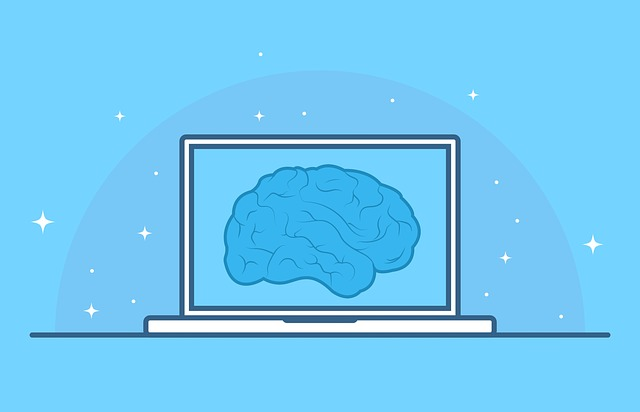This article will explore the basics of machine learning and its benefits in business, as well as the challenges organizations face when implementing AI and ML solutions. We’ll also look at how organizations use machine learning for better decision making, implementing AI into organizational processes, tips on choosing the right ML tools for your organization, and more. Finally, we’ll discuss what the future holds for this rapidly expanding field of technology.
What Is Machine Learning?
Machine Learning (ML) is a branch of Artificial Intelligence (AI) that enables computers to learn from data without being explicitly programmed. It uses algorithms to analyze patterns and infer rules from data, providing computers with the ability to make decisions and predictions. ML techniques have been used for decades, but the history of ML can be traced back to 1959 when Arthur Samuel coined the term ‘machine learning’.
The definition of Machine Learning involves 4 main components: representation, evaluation, optimization and generalization.
Representation
Representation refers to how the data is organized.
Evaluation
Evaluation relates to how the algorithm assesses its performance.
Optimization
Optimization refers to searching for the best solution amongst all available solutions.
Generalization
Lastly, generalization refers to the ability of ML models to use their training on one set of data and apply their knowledge on similar unseen datasets.
5 Cost Benefits of Adopting Automation within Your Organization

Increased Efficiency
With the power of machine learning, businesses can use data to create algorithms that recognize patterns and make decisions without human interference. These algorithms can simplify tedious tasks such as data entry, record keeping, and analytics, making them more accurate and saving time.
This increase in efficiency allows businesses to focus their resources on more important activities like developing new strategies or products. AI-powered automation also helps reduce costs by eliminating costly manual labor. Additionally, since machine learning is not prone to error like humans are, businesses can be sure that their decisions are informed by reliable data sourced from the most accurate sources available.
Improved Accuracy
Organizations can improve their accuracy and reduce human errors in their processes. For example, AI-driven automation can eliminate mundane tasks which are prone to human errors like data entry and record keeping. Machine learning algorithms can also be used for predictive analytics, which allow organizations to better anticipate customer needs or anticipate changes in the market before they happen.
This helps reduce labor costs, as well as increase efficiency overall. The cost savings associated with AI and machine learning can be reinvested into other areas of a business, thus improving its profitability over time.
Reduced Costs
By reducing the need for manual labor, AI and machine learning can help any organization to significantly reduce overhead costs associated with hiring additional staff or outsourcing services. Additionally, AI and machine learning can improve operational efficiency by automating processes that would otherwise require human intervention, saving time and money while allowing greater focus on more important tasks.
Moreover, because AI and machine learning systems can be quickly deployed on an as-needed basis, organizations can scale up quickly when needed without having to worry about making long-term commitments to employees or contractors.
Increased Productivity
The use of AI and machine learning in organizations can vastly improve productivity by taking over mundane, repetitive tasks that require a great deal of time. This enables employees to focus their efforts on more complex tasks that require creativity and critical thinking. AI and machine learning are capable of processing large amounts of data quickly, making it possible to find patterns and insights faster than ever before. Furthermore, AI can be used to discover problems with products or processes before they become major issues, saving organizations both time and money.
Improved Customer Service
The use of Artificial Intelligence (AI) and Machine Learning (ML) for customer service has become a major advantage for businesses. ML algorithms can be used to automate tasks such as responding to customer inquiries or providing suggestions for troubleshooting problems. AI-powered technology can also enable customer service representatives to quickly process large amounts of data and to provide personalized, efficient service for customers.
5 Challenges in Implementing Artificial Intelligence and Machine Learning Solutions

Data Collection
One of the biggest challenges when implementing AI and machine learning solutions is the collection and cleaning of data. Many machine learning models require large amounts of data in order to work effectively, and without properly cleaned and prepared data, these models may produce inaccurate results. Incomplete datasets can lead to issues such as missing values that need to be accounted for or incorrect information being passed onto a model. Corrupted datasets on the other hand are more difficult to detect and can introduce errors into a model if not identified upfront.
Data Cleaning
Data cleansing is also an important step in preparing data for use with AI/ML models. Removing inconsistent or erroneous records, filling in missing values if possible, correcting formatting issues (e.g., dates or currency), normalizing numerical values (e.g., converting units across countries) and standardizing categorical values (e.g., encoding text categories) are just some examples of cleaning techniques used when preparing data for ML models.
Model Selection and Training
Model selection and training are two of the most challenging aspects of implementing AI and machine learning for businesses. It is often difficult to identify the best model for a given problem, as it needs to have the capability of producing accurate predictions while being able to run efficiently with limited resources. Furthermore, even when an appropriate model is identified, ensuring its effectiveness can be problematic.
Algorithm Performance Evaluation
First, identifying the appropriate metrics for measuring algorithm performance and assessing progress over time can be difficult. In many cases, there are numerous factors that need to be taken into account such as accuracy rates, speed of model training and testing, scalability, cost savings versus manual labor costs, etc. Second, properly evaluating the impact of changes made in order to optimize the algorithm’s performance may require significant resources from the business.
Implementation of AI/ML Solution in Production Environment
The technology used is often complex and difficult to understand which can create a high barrier to entry. Additionally, there are often significant costs associated with the implementation of AI/ML solutions as they require specialist skills and resources that may not be readily available to companies. Further, there can be a lot of time needed by businesses to first research and develop these solutions before they are even ready for production.
Maintenance, Monitoring, and Updating Solutions
The challenge of maintenance, monitoring, and updating solutions in the context of artificial intelligence (AI) and machine learning for businesses is vast. As many companies begin to adopt these technologies into their workflows, it requires an ongoing commitment to manage them well. This means regularly checking for any data or model drift that may occur due to changing conditions in the environment or from changes in underlying data sources. Furthermore, regular testing of models should be performed to ensure that they are performing as expected and providing the desired outputs.
10 Steps to Follow While Developing an AI/ML Solution

Define the Problem
Computer science has advanced greatly in recent years, allowing us to identify patterns and make sense of data with natural language processing. This technology can revolutionize the way we solve problems in a variety of industries, from healthcare to finance. By clearly defining the problem before beginning an AI/ML project, stakeholders can ensure that all requirements are met and expectations are set for potential outcomes.
Moreover, properly identifying patterns using natural language processing allows us to quickly develop solutions that would have taken much longer without this technology. With careful planning and consideration of all aspects of the project, computer science can help us reach new heights in productivity and efficiency.
Create a Dataset
The creation of a dataset is necessary for the development of a successful machine learning solution. For example, any model created needs to be fed with data from both structured and unstructured sources such as text, images, audio and video. Cleaning up this data is also essential to ensuring accurate results are achieved from the machine learning algorithms applied.
To create an effective model it must be based on a good set of data that has been collected from reliable sources, properly organized and normalized, as well as free from any errors or anomalies. Machine learning algorithms can then be applied to this set of data in order to create a predictive model which can accurately predict future outcomes.
Choose an Algorithm
When it comes to machine learning models, supervised and unsupervised learning are two of the most commonly used approaches. Supervised learning is a method in which a model is trained by providing it with labeled datasets that have already been sorted into predetermined categories. This type of algorithm focuses on finding patterns between data points and then making predictions based on those patterns. Unsupervised learning, on the other hand, is an approach in which data is given to the model without labels or specific instructions.
In terms of complexity, supervised learning tends to be more suitable for simpler tasks such as binary classification; whereas unsupervised learning can be used for more complicated tasks such as clustering or anomaly detection due to its ability to discover hidden relationships within data.
Train the Model
Training a machine learning model requires complex mathematical calculations and algorithms that can process the data to produce accurate results. Reinforcement Learning is one of the most popular techniques used in this process, which involves providing feedback or rewards based on the output of the model’s calculations.
This feedback loop helps to continually improve the model’s performance over time, allowing it to better classify and predict results more accurately. The goal is for these models to not only be able to make decisions on their own but also to improve upon them using evidence from past experiences.
In order to do this, they must first be trained with high-quality datasets and use sophisticated algorithms that are constantly being refined through testing and validation procedures. The key here is to constantly monitor and update the algorithms used so that they are always learning and improving based on new data, which allows them to develop more complex interpretations of data and make more accurate predictions about future outcomes.
Evaluate Model Performance
The utilization of machine learning technology to automate the evaluation of ensemble models is becoming increasingly popular due to its potential for significant cost and time savings. By automating the model evaluation process, organizations can identify the best performing model faster and more accurately than manual processes. Furthermore, automated evaluations enable computer vision applications to benefit from a greater number of data points when creating predictions, resulting in higher accuracy levels.
Additionally, by leveraging automated processes such as neural networks, developers can reduce the risk of overfitting their models. This ensures that results are reliable and consistent across different datasets or tasks. Furthermore, automated ensemble models enable multiple model types to be evaluated against each other with relative ease, allowing businesses to choose which type performs best for their needs.
Deploy Model into Production Environment
Deploying models into production environment is an important step in the machine learning process, as it enables minimal human intervention while achieving maximum efficiency. This can be achieved through a variety of machine learning methods such as supervised or unsupervised learning, deep learning and reinforcement learning.
The model(s) deployed in production should be able to accurately predict or classify new values without manual intervention for real-time predictions or classifications. With this method, businesses are able to reduce time and resources needed for manual operations while increasing accuracy and productivity of their operations.
Monitor Models Post Deployment
In today’s world, Machine Learning is becoming an increasingly important part of the data science field. With advancements in this technology, different Machine Learning models can be leveraged to effectively identify patterns and trends within data sets. One type of model is reinforcement learning which utilizes trial-and-error algorithms to identify a preferred action that maximizes reward.
This model is often used when training a computer agent to perform certain tasks and is particularly useful for applications such as robotics control where robots can learn by interacting with their environment.
Furthermore, machine learning models can also be used in complex decision making process such as fraud detection or medical diagnosis. In these cases, various metrics are measured against the outcomes achieved by different ML models over time to determine which model best suits the task at hand. It’s crucial for organizations deploying models into production environments to monitor their performance regularly as conditions may change over time leading to decreased accuracy in results delivered by models.
Reactive changes such as data transformation, parameter tuning or feature engineering might need to be implemented to maintain high levels of accuracy from the machine learning model deployed.
Continuous Improvement
Continuous improvement is an essential part of any successful machine learning and artificial intelligence project. This involves regularly updating algorithms based on changing scenarios or trends observed in the latest datasets being fed into models, so that they can stay ahead of the curve when it comes to delivering accurate predictions within a shorter span of time.
By devising plans for continuous improvement processes around ML/AI solutions deployed into production environments, organizations can ensure that their models remain up-to-date and effective over long periods of time.
Develop Explainable AI Solutions
The use of machine learning applications to perform tasks has been gaining traction in recent years due to the increasing availability of powerful computing resources and advancements in AI technology.
However, with this increased complexity comes a lack of explainability which can make it difficult for users to understand why certain decisions were made by the system when performing tasks. This is why developers should always strive to create explainable AI solutions that allow users to gain insight into what’s driving particular decisions made by the system.
Stay up to date with the Latest Trends
In today’s world, staying ahead of the curve is essential when it comes to Artificial Intelligence (AI) and Machine Learning (ML). As technology continues to evolve rapidly, it is important for professionals in the AI and ML fields to stay on top of the latest trends.
Keeping up with these advancements can help ensure that you are using the most relevant tools and techniques available to develop optimal solutions for your business needs. By understanding what’s new in AI and ML, you can gain a competitive edge over your peers. This will not only increase productivity but also improve your chances of success.
5 steps to Implement AI and Machine Learning in Your Business
Establish a Data Strategy
As businesses increasingly incorporate AI and machine learning into their operations, it is critical to establish a sound data strategy. A well-developed data strategy will ensure that the necessary guidance is provided for effective implementation of AI/ML initiatives. This includes mapping out data sources and understanding how to collect, store, and maintain this information in a secure way.
Additionally, organizations need to be aware of privacy protocols when collecting customer or employee data as well as any legal implications associated with using these technologies. With careful consideration given to these factors, businesses can maximize the benefits of utilizing AI/ML for improved decision making and increased efficiency.
Define Business Goals
When it comes to leveraging artificial intelligence (AI) and machine learning (ML), it is essential for businesses to define their goals up front. Doing so will help determine the scope of the project and ensure that the right technology solutions are being implemented in order to reach these objectives.
Goals may include cost reduction, increased revenue, improved customer service or better decision-making capabilities. By establishing clear business goals prior to implementing an AI/ML initiative, organizations can be sure they are making intelligent investments with maximum return on investment potential.
Select the Right Technology
Choosing the right technology is an important step in achieving success with any Artificial Intelligence (AI) or Machine Learning (ML) project. With the number of options available today, it can be difficult to decide which one will provide you with the best results for your business goals.
From major tech companies such as Google Cloud Platform and Amazon Web Services, there are a variety of AI/ML solutions available for deep learning and natural language processing that could help you achieve your desired outcomes. It’s important to carefully consider all of these options before making a decision on which one is best suited for your particular project.
Build a Team
In order to effectively and efficiently implement an AI/ML project, it is important to have a well-rounded team with expertise in various areas. This team should include people who are knowledgeable about the industry sector that the project is targeting, as well as those with technical knowledge such as machine learning engineers.
Additionally, experts from other disciplines such as marketing or operations can help ensure that the initiative produces tangible value throughout its lifecycle management process. A diverse team of individuals with different skill sets and perspectives will be essential for success when launching an AI/ML project.
Test & Monitor Results
Testing and monitoring results is an essential part of any AI/ML project. It ensures accuracy of outputs being produced by algorithms in real-time scenarios or batch processes, as well as measuring their performance against established baselines over time.
A/B testing can be used to identify areas where improvements need to be made and adjustments can be made when needed based on changing conditions in the markets or related operations. Regularly testing and monitoring results helps ensure that the AI/ML project runs smoothly and produces positive outcomes for businesses.
What is the Future of Machine Learning?

The future of machine learning looks incredibly exciting. As technology continues to advance, machine learning algorithms are becoming more powerful and capable of performing complex tasks with greater accuracy than before. This will open up new possibilities for businesses and organizations, allowing them to analyze large amounts of data quickly and accurately in order to make better decisions.
Additionally, the use of AI-driven automation is likely to become even more prevalent in the near future, as machines can take on a variety of mundane tasks that humans would otherwise have to do manually.
Takeaways
AI/ML initiatives can provide businesses with a wide range of benefits, including cost savings and efficiency gains. However, in order to get the most out of these technologies, it is important for organizations to define their goals upfront and select the right technology solution that best meets their needs. Building an interdisciplinary team with expertise across various areas is also essential for success when launching an AI/ML project. Finally, regular testing and monitoring results should be conducted throughout the lifecycle management process in order to ensure accuracy of outputs produced by algorithms as well as measure performance against established baselines over time. With careful consideration given to all these factors, businesses can maximize the potential of leveraging AI/ML solutions for improved decision making.

Leave a comment